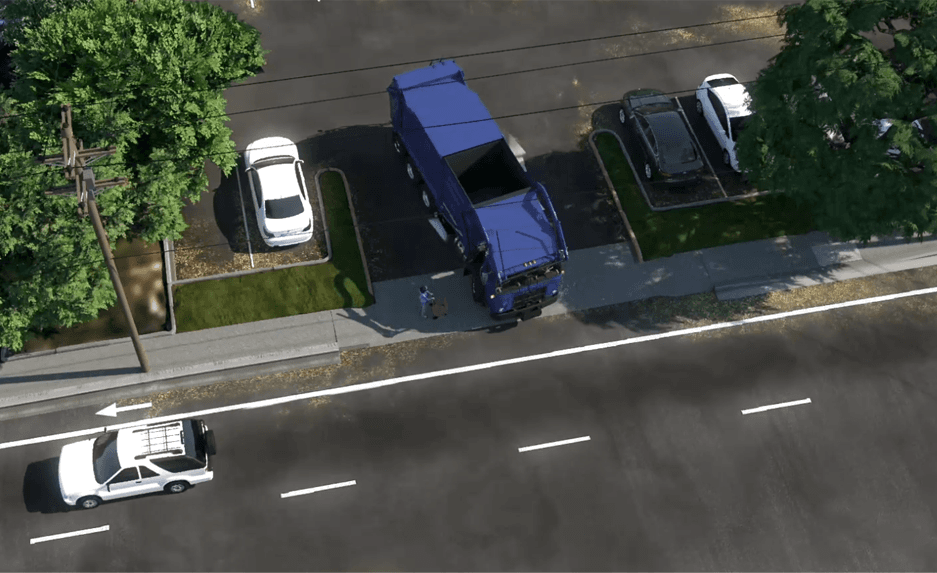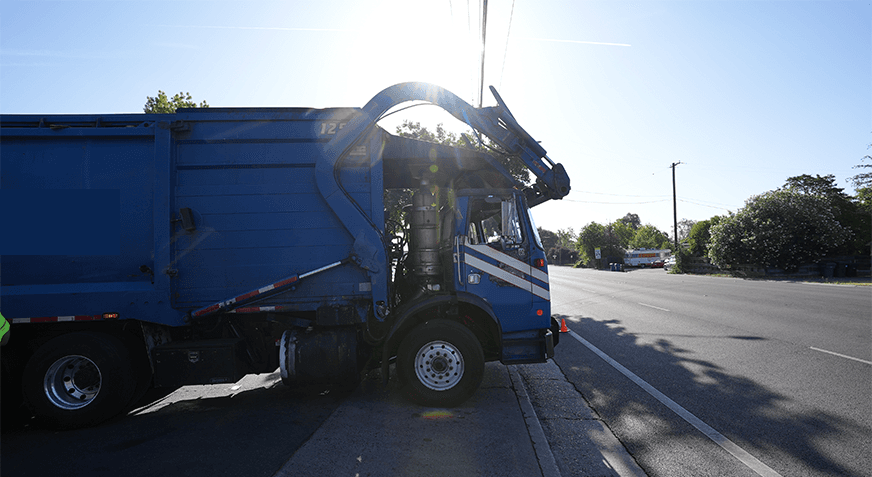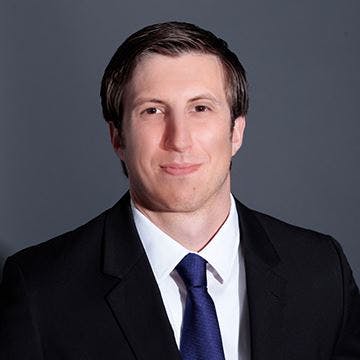
Seek and Illustrate the Truth -
Call Now 1-415-754-7772

Dump Truck vs. Pedestrian Visibility Reconstruction
In most accident cases, investigators are tasked with reconstructing an accident with partial or no direct recording of the incident itself. In these instances, it’s important to uncover key factors of the accident by understanding the relationship among the objects moving through the environment through evidence and analysis.
One sunny workday, a serious accident occurred involving a dump truck and a pedestrian on a sidewalk. The garbage truck driver was making a routine pickup at a local apartment complex when he moved to the exit of the parking lot. According to his testimony, he waited for a gap in oncoming traffic so he could turn right and resume his scheduled pickups but had to wait nearly a minute before an opportunity presented itself.
As he drove out and turned to the right, the driver felt a bump and heard a scream. He jumped out and realized the right side of his vehicle ran over a woman on the sidewalk, who was seriously injured and had lost partial use of her legs.
A security camera from the apartment captured the part of the incident where the truck waited to pull out. Because the camera’s activation was based on sustained nearby motion, it did capture the truck pulling up to the parking lot exit but reset by the time the truck made its right turn and injured the woman. The ensuing reconstruction would require a line-of-sight and positional analysis to fill in the gaps where the footage cut out.

Challenge:
Determine the driver’s visibility of the pedestrian during the incident
Solution:
- Review security footage leading up to the incident
- Laser-scan the incident area and involved dump truck
- Reconstruct the last-known positions seen on footage and how incident occurred
- Animate the accident using the 3D working model of the environment, truck and pedestrian
The 3DF team reviewed incoming material to build an initial understanding of what happened. Without video recording of the accident itself, the team planned out how to visualize the incident with the team’s biomechanical expert.
The team moved to capture environmental measurements through laser scanning. After performing about ten scans of the environment, 3DF’s specialists brought the data back to the office and modelled the digital environment.
The next step was to develop and input a 3D model of the garbage truck. To produce an accurate model of the truck, the team went to the dump yard to scan the exact truck involved in the accident for foundational specs. The team placed the actual driver in the driver’s seat so we could place his eye-level perspective in the 3D working model with precision.
The team then worked to determine the positions of the dump truck in the environment right before the camera feed cut. With the elements ready for the 3D working model, we used the process of laser-based photogrammetry to align the position of the truck last seen on camera to match the truck’s model in our 3D world as closely as possible. With these 3D positions verified, we calculated the truck’s most logical path of travel to where it was seen in police photos following the injury incident.

After performing our digital position-match, 3D Forensic brought the truck and driver to the actual incident site, placing the truck in the exact spot measured in the 3D working model. We asked the driver to verify that these angles matched what he saw that day, which he confirmed, allowing us to understand the blind spots of the truck with certainty. The team realized he angled the truck greater than 90 degrees from the sidewalk to his right (facing slightly left towards the oncoming traffic) while waiting to exit the lot. This meant he could only see objects on the sidewalk that were about twenty feet or farther away; closer objects were obstructed by the right-side door.
This discovery accounted for the driver’s inability to see the pedestrian when they were next to the vehicle. While watching for a break in oncoming traffic from his left for about 30 seconds, the plaintiff, who stood about five feet tall, had walked up to the right side of the vehicle waiting for it to pull out. She had waited for a matter of seconds in the blind spot of the truck, and while standing there, the driver pulled out into traffic, running into her during a wide-right turn.
3D Forensic rendered the driver’s perspective and line-of-sight analysis into an animated exhibit, reflecting how he had looked left, then right, then left for vehicles to stop. While waiting and looking left, the woman walked up to the blind spot, and before entering traffic, James looked right once more, unable to see her. We also animated this incident from an objective overhead angle, allowing an audience to understand how we placed the truck’s location and seeing a visualization of James’s visibility.
Illustrating the driver’s perspective played a key role in verifying his explanation that he hadn’t seen the pedestrian before driving into the street. After attorneys for the dump truck company showed our visualization in mediation, both sides arrived at an agreeable settlement with a better understanding of the true liability for this accident.
Talk to Our Forensic Team
Let Us Help You Seek & Illustrate The Truth
By submitting this form, I confirm that I have read and understood the 3D Forensic Privacy Statement.
"We have used Jason Fries and his team twice to create medical videos depicting complex surgeries. The videos impressed both the jury and the defense attorneys. Perhaps most helpful, Jason will work on short notice and provide a persuasive product."

Robert Igleheart
Rouda, Feder, Tietjen & McGuinn
